Zoom
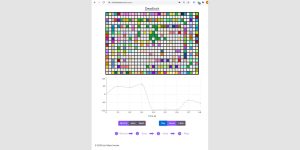
Cellular Seeds – Inexorable futures
Alejandra Marinaro (AR)
The Latinamerican Bioarte Lab (LatBioLab) explores more than 12 years of Bioart in Argentina. From ‘The Biosphere Project‘, Joaquín Fargas (AR), a simple way to show the world ecosytem, until ‘Colony‘, Darío Sacco (AR) that connects technology with biology and ‘Cellular Seeds - Inexorable Futures‘, Aleandra Marinaro (AR) that generates a new kind of “tech-life“. The Biosphere Project launches the adoption program of small worlds: ¨Adopt a World, adopt your World¨.

Cellular Seeds - Live Interaction with the artist
Alejandra Marinaro (AR)
Live interaction with the artist The existence of destiny is an inherent question about the human condition and many believe it to be unique. Meet the artist behind Cellular Seeds. Link to enter will be available in alejandramarinaro.com

Fargas open studio
Joaquín Fargas (AR)
Live interaction with the artist Visit the studio in real time and talk with the artist. Meet the robots Glaciator and Rabdomante. Link to enter will be available in joaquinfargas.com

Bioplastics and the New Materiality of Waste
Idil Akdos (NO)
Wie entsorgen wir neue Materialien sicher? Das Team von CitiComPlastic untersucht, wie Abfälle aus Biokunststoff sicher in Kompost umgewandelt werden können. Diskutieren Sie mit ihnen, wie neue Materialien und Umweltprobleme zusammenhängen und wie wir unsere Praktiken, Strukturen, Richtlinien und Perspektiven ändern müssen, um diese Frage anzugehen.
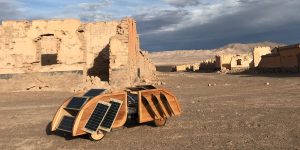
Dialogue Between Deserts
Joaquín Fargas (AR)
Two robots (Glaciator and Rabdomante) placed in two symbolic spaces ―Rabdomante in the Atacama Desert and Glaciator in Antarctica― aim to sensitize us to our human condition and our relationship with Earth Gaia. Glaciator Glaciator is a robot made in Antarctica. Made up of solar panels, it compacts and crystallizes snow, turning it into ice and then adhering it to glaciers to help them grow and regain the mass they lost as a result of thawing. Rabdomante Design and realization: Elia Gasparolo The combination of nature and technology allows Rabdomante to generate a new life cycle in the desert, drawing water from the atmosphere in the driest place in the world.
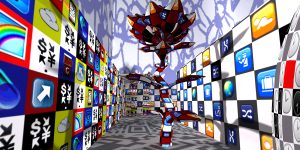
CNMAT ODOT
John MacCallum(USA), Jeff Lubow (USA)
In diesem Workshop geben wir eine kurze, praktische Einführung in ODOT, eine dynamische, multiparadigmatische Programmierumgebung, die mit Open Sound Control arbeitet. ODOT wurde Anfang 2007 an der CNMAT entwickelt und hat sich zu einer leistungsstarken und robusten Suite von Werkzeugen entwickelt, die in einer Vielzahl von Kontexten nützlich sind, von der Signalverarbeitung für Gesten bis hin zur computergestützten Komposition. Während dieses Workshops werden wir den aktuellen Stand des Pakets und die Zukunft des Projekts diskutieren.
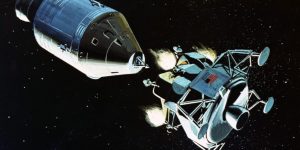
A new moon landing
Mehak Sarang
We are going to the moon again, and this time, to stay. But how should we do it this time and do it right?

Interplanetary Time, Communication, and Longevity
Che-wei Wang, Sands Fish
When distance is measured by light years, how do we learn from the past and make decisions for the future?

Wellbeing in Extreme Environment
Maggie Coblentz
How do we adapt to extreme conditions and how we care for each other? In the time of pandemic and isolation, can we learn from astronauts and people who have lived through hardships?

Uncomfortable Clothes #01
Fashion Frictions - Otto von Busch (Keynote)
There is a friction haunting fashion. Many of the basic qualities of design shares an uncomfortable fit with the way we interact with clothes: They are irrational. They are neither functional, nor user-friendly. Fashion is difference but also sameness, the new as well as the old, the cloning of idols as well as their rejection. It is a sense of pride as much as shame. And it is not uncommon that we feel an urge to lie to others about what we wear and our recent purchases. What is going on here? How are we to deal with the shallows and depths of fashion?

Re-FREAM round #1 presentations: Witsense & Jessica Smarsch
Witsense & Jessica Smarsch , hosted by Re-FREAM (INT)
Join this session to hear more about about Re-FREAM projects Lovewear by Witsense team and Constructing Connectivity by Jessica Smarsch.

Re-FREAM round #1 presentations: Julia Körner
Julia Körner (AT), hosted by Re-FREAM (INT)
Join this session to hear more about Julia Körner’s Re-FREAM project Digital Vogue.

Re-FREAM round #1 presentations: Ganit Goldstein
Ganit Goldstein (IL), hosted by Re-FREAM (INT)
Join this session to hear more about Ganit Goldstein’s Re-FREAM project WeAReAble.

Re-FREAM round #1 presentations: Youyang Song
Youyang Song (CN), hosted by Re-FREAM (INT)
Join this session to hear more about Youyang Song’s Re-FREAM project Cooking New Materials.

Re-FREAM round #1 presentations: Elisabeth Jayot
Elisabeth Jayot (FR), hosted by Re-FREAM (INT)
Join this session to hear more about Elisabeth Jayot (FR) and her Re-FREAM project Fragments Garments.

Re-FREAM round #1 presentations: Jef Montes
Jef Montes (NL), hosted by Re-FREAM (INT)
Join this session to hear more about Jef Montes (NL) and his Re-FREAM project Marinero.
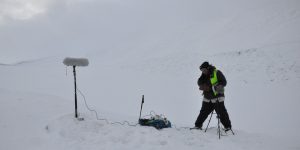
Creative Question Challenge: The Organ of Consciousness
Oswaldo Maciá (CO/UK), Chris Bean (IE), Emilia Leszkowicz (PL)
"Lasst uns beenden, was wir begonnen haben." Auf diese Weise stellt die UNO ihr erstes Ziel für nachhaltige Entwicklung vor - das Ende der Armut in allen Formen und Dimensionen bis 2030. Die 17 Ziele der Nachhaltigen Entwicklung und ihre 169 Teilziele wurden als ein ausuferndes, missverständliches Durcheinander großer Absichten beschrieben. Allein der Titel der Entwicklungsagenda - "Unsere Welt umgestalten" - verströmt utopische Ambitionen. Er wurde 2015 von 193 Nationen angenommen. Fünf Jahre später und mit zehn verbleibenden Jahren: Wie wird sich unsere Welt verändern?

Art for Future: CO-IMAGINATIONS and CO-PRODUCTIONS for TOMORROW’S WORLD
Filmuniversity Babelsberg KONRAD WOLF (DE), Institute for Art and Innovation (DE)
Workshop - The zone that enables life and makes the planet unique is thinner than previously thought. How should we shape the future positively when conventional visions mainly depict hopeless and bleak dystopias? What we collectively want, what we can imagine, is strongly shaped by the media that surrounds us in our visual-addictive century. Can we imagine futures that serve the common good as well as the regeneration of the planet? How can we create synergies to work less, but be productive together?
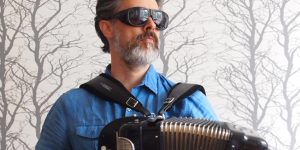
Machine folk music school
Bob L. T. Sturm (US)
Die "Machine Folk Music School" wird von Bob L. T. Sturm (US) per Videokonferenz geleitet. Er lehrt eine KI-generierte Volksmelodie in der klanglichen Tradition. Alle Musikinstrumente sind willkommen.
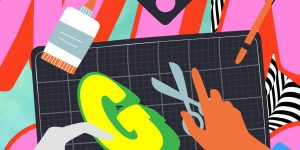
HOLD ON TO THE GOOD THINGS, IMAGINE THE BEST THINGS
An opportunity to reflect on COVID-19 and its effects on society, and speculate on what comes next. What roles do science, technology and art play here?


